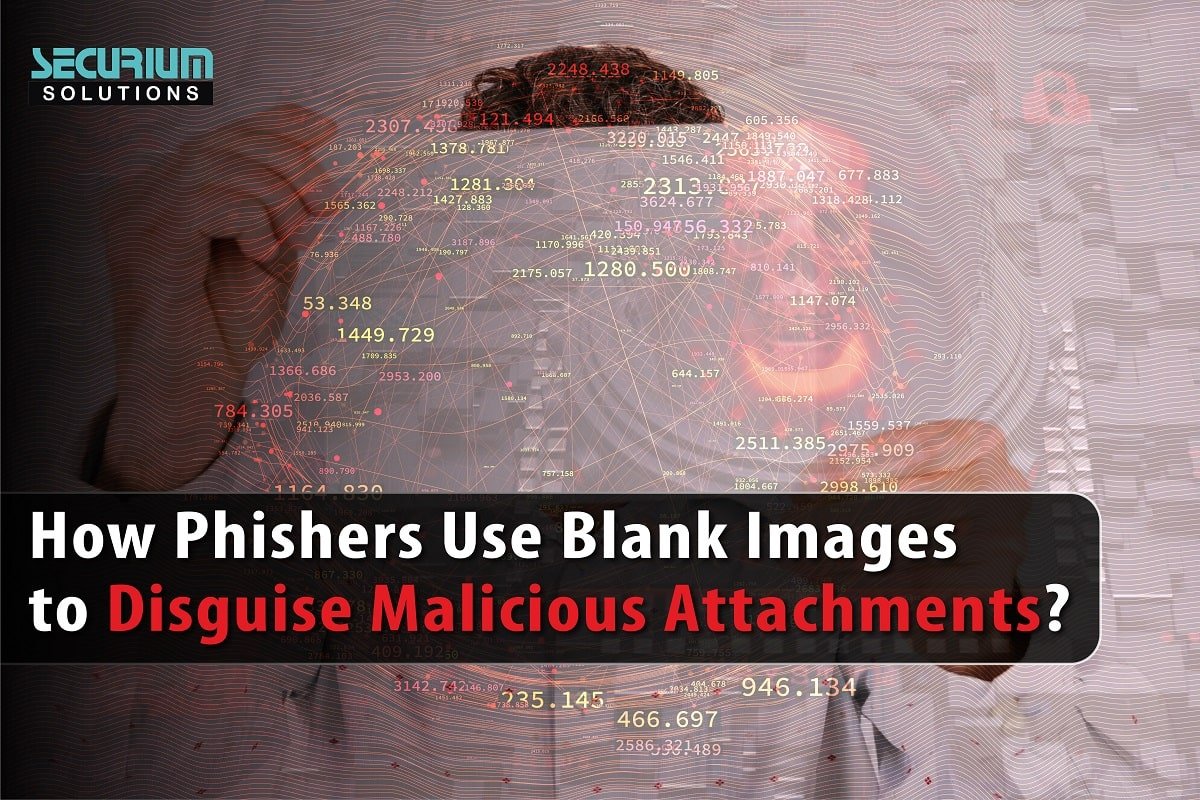Jan 23, 2023 / By Securium Solutions
Phishers are individuals or groups who use fraudulent tactics to obtain sensitive information, such as passwords or credit card numbers, from unsuspecting victims. One tactic they use is disguising malicious attachments as harmless image files. This is a particularly effective technique, as many people are less likely to be suspicious of image files compared to executable files or scripts.
One common method that Phishers use is to create a blank image, such as a white or transparent PNG file, and embed the malicious payload within the file’s metadata. This can include executable files, scripts, or links to malicious websites. Because the image appears to be blank, it may not raise suspicions when the victim receives it as an attachment in an email or message. The victim may assume that the image is simply a placeholder or a graphic that was supposed to be included in the email, and may not even bother to open it. However, when the victim does open the image, their computer will automatically execute the malicious payload, which can result in serious consequences such as data theft or malware infections.
Another technique that Phishers use is to take a legitimate image file, such as a JPEG, and embed a hidden, malicious payload within the image data. This can be done using steganography, a technique for hiding data within an image file. Steganography is a powerful tool because it allows them to hide a malicious payload within an image file in such a way that it is invisible to the naked eye. Even if the victim does open the image, they may not be able to detect the payload and may assume that the image is safe. However, when the image is opened on a computer, the payload will be executed, and the victim’s computer will be infected with malware or their sensitive information will be stolen.
Phishers also use social engineering tactics to trick victims into opening the attachment. For example, they may pose as a trusted source, such as a bank or a government agency, and send an email or message that appears to be legitimate, urging the victim to open the attachment for important information or updates. They may also use a sense of urgency or fear to convince the victim to open the attachment, such as claiming that there is a security breach or that the victim’s account has been compromised. This can be particularly effective, as many people will be more likely to open an attachment if they believe that it is important or that it is related to their security.
It is important to be cautious when receiving attachments from unknown or suspicious sources. If the attachment is unexpected or unsolicited, it is best to delete it immediately. Additionally, it is a good practice to keep anti-virus and anti-malware software updated, as well as to use a spam filter to block known phishing emails. It’s also recommended to not click on links or open attachments in emails, messages, or social media posts that come from unknown or suspicious sources.
Another best practice is to be wary of messages or emails that ask for personal information such as passwords, credit card numbers, or social security numbers. Legitimate organizations will never ask for such information via email or message.
It’s also important to keep your computer and mobile devices updated, as well as running the latest version of your operating system. This will help to protect your devices from known vulnerabilities that can be exploited by Phishers.
In conclusion, Phishers use blank images to disguise malicious attachments by embedding the payload in the file’s metadata or hiding it within the image data, in a process called steganography. They also use social engineering tactics to trick victims into opening the attachment and obtain sensitive information.




